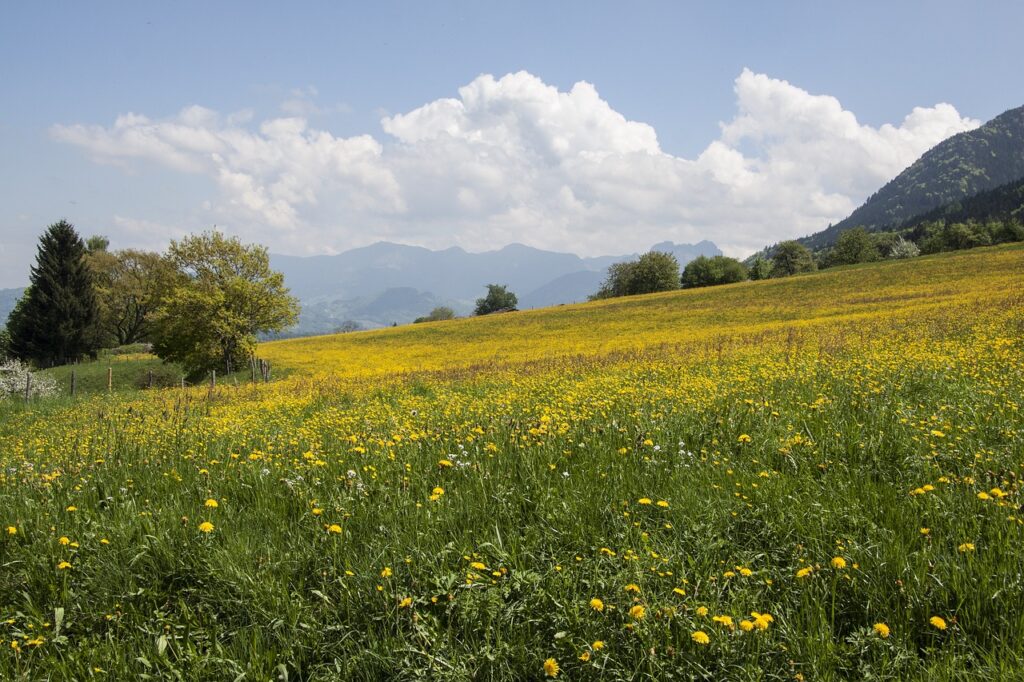One gets used to believing that names of the months in almost every language have their roots in Latin. Polish seems to defy following its rule. Only one name for “marzec”, English March is connected with the mighty and powerful god of war. It is worth mentioning that back in the day in the ancient Roman empire people celebrated great holidays dedicated to Mars called “The Ides of March”. Generally speaking, probably “maj”, English May is from the name of Roman Mother Earth but the etymology of this name is also connected with Polish verb “maić”. More about it in the next part of the article. Nowadays we forget about Roman traditions nevertheless the name of the month still accompanies us.
Undoubtedly, the Polish name of the months makes justifiable astonishment among foreign students. Giving insight into them is far away from an easy task. Very often basic forms are different from the same words used in the other grammar cases. Consonant clusters, the consonant exchange or missing some values – all create the view of Polish as the hardest language in the world. The very thought of studying Polish months makes the students sick. In a split of common opinions, I would like to grab your attention and unveil the mysteries of the Polish name of the months with you. Don’t pick and choose! Let’s do it!

THE NAME OF THE MONTHS AT A GLANCE
The year is opened by “styczeń”, English January. The name of it comes from the verb “stykać”, which means to connect, to touch. One can ask why? What does it connect with whose? The answer is simple. In January the old year brings into contact with the new year. The old issues, ageing problems, bygone situations, troublesome debts – all of them pass away as a touch of a magic wand when the old year passes away and leaves the free place for the new. Even if there is only one day – the first of January, it leaves hope for a better future.
The second month is “luty”, English February. The history of its name is somewhat is quirky. Based on the literary heritage and poems sources one can notice that presumably the noun “luty” was also used as an adjective “luty” and meant cold, frosty, sloped about winter. It is no brainer that this part of the year was called like that because the winter in Poland is usually white, full of snow and the temperature drops below freezing. In short, one should be ready for a hard winter and the name of the month reminds us about it. Curiously, this adjective is rather obscure and not many people use it these days.

At the beginning of this article, we were writing about the roots of the next month which is “marzec”. Like it or not March is only one name of the month that comes from the Latin language. This period of time, full of admiration for the huge god of war, brings associations with the great habits and traditions of Antic Romeos.
After March, there is “kwiecień”, English April. The noun etymology is really spectacular. Not incidentally, “kwiecień” comes from “kwiat”, which means English flower or from the verb “kwiecić” – means to bloom. In this period of time, we can notice an outbreak of spring. The trees are suddenly blooming, leaves are green. It seems nature wakes up and is reborn after the winter. Although the spring becomes at the end of March, we can’t be sure that the weather in April will be typical for this season of the year. One considers April brings blooming and reborn of nature but also cold winter wind. Polish idiom illustrates the written situation in the best way: “kwiecień plecień, co przeplata, trochę zimy, trochę lata”. It means there is a mix of some of the winter some of the summers in April. Now it is clear why Poles wear worm jackets or coats in the morning when they arrive to work. Mornings can be really cold at that time.
WHAT “MAIĆ” MEANS AND WHY “MAJ” IS DEDICATED TO ROMAN MOTHER EARTH?
The notion “maj” itself has various faces. One of them brings associations with Antic Roman Mother Earth, who was responsible for fields, crops and life on the Earth. It is no surprise that the noun “maj” has got Polish roots and comes from the verb “maić”, which means decorated by flowers. All fields, hills and meadows are made of flowers. Colorful carpets are visible to the horizon.

WHAT KIND OF WORMS WAS PICKED UP BY SLAVIC AND WHY “CZERWIEC” IS CONNECTED WITH THIS HABIT?
Based on Aleksander Bruckner’s etymology dictionary the name of June comes from the Slavic habit which took place in the past. The worm larvae common called “czerw” appeared always on the roots, tree trunks in June. People picked up them, dried and used them as a popular fabric dye. The dye was produced in Slavic areas so nowadays also in the other Slavic languages one can find words like: adjective “czerwony”, means English red; or the verb “czerwienić się”, means to blush.
Even if currently we know the other ways of dying the textiles, the name “czerwiec” is used by Poles without awareness.
The appropriate definition of the next month we should look for also in nature. A typical Polish tree called “lipa” is blooming in July. What does “lipa” mean in English? There is linden for the European species or lime trees for Britain and Ireland although they are not related to the tree that produces the citrus fruit lime. Poles produce over 2,000 tons of linden honey annually. White linden flowers tempt the bees who are diligently collecting nectar. Linden honey is very effective and helps the immunology system to improve and protect from various viruses.
Look sometimes at the trees in July and try to find linden, full of white flowers. Maybe it makes you remember the Polish name of this month.

After “lipiec” is “sierpień”, English August. In this case, Polish history exerts a huge influence on the language. Literally, the name of country Polska means “the land of fields”. Back in the day, people worked in the fields and existed picked up crops. August was time for harvest. At the beginning before a scythe, Poles used a sickle as a popular tool in a field. Obviously, the most use of it was in August, hence the name of the month.

When we hear Polish “wrzesień”, English September, we associate the month with heathers, Polish “wrzos”. Beautiful violet plants bloom in autumn. It is a pleasure to walk along Polish valleys or meadows, full of these flowers. Although heathers are more popular in the United Kingdom of Great Britain and Northern Ireland, one can meet them also in Poland.
However, Polish autumn is full of gold cereals, which sparkle, purple heathers, one can’t forget about flax and hemp. October was the time for processing and producing flax. Dried stalks which were left after it called “paździerz”, English harl. The explained habit took place in Polish październik, English October so the name of the month reminds it.
The next month has got lovely roots. The Polish noun “listopad”, English November, consists of two other words: “liść”, which means leaf, and the verb “spadać”, which means to fall down. Poles love the possibility to walk into parks and observe colorful leaves dancing in the wind. Moreover, red, brown, green and orange fallen down leaves create the soft carpets under the trees.

The article about the etymology of the Polish name of months is closed by the last month – English December, Polish “grudzień”. It comes to this noun there is a connection with the other word “gruda”, which means a clod. December is wintertime. In the light of the foregoing, the ground is cracked with frost very often and parts of it look like small clods, rough and not nice.
Surely, for foreign students who want to remember the Polish name of months the best way is to learn by heart. The second issue is the exchange consonants and differences between the basic form and form of a noun which depend on the preposition “on”, Polish “w”. Please take a glance at the table below:
| January | styczeń | in January | w styczniu |
| February | luty | in February | w lutym |
| March | marzec | in March | w marcu |
| April | kwiecień | in April | w kwietniu |
| May | maj | in May | w maju |
| June | czerwiec | in June | w czerwcu |
| July | lipiec | in July | w lipcu |
| August | sierpień | in August | w sierpniu |
| September | wrzesień | in September | we wrześniu |
| October | październik | in October | w październiku |
| November | listopad | in November | w listopadzie |
| December | grudzień | in December | w grudniu |
There is a lesson hard to swallow but on the other hand, I hope my article will bring you closer to the truth and reveal the secrets of the language.
Enjoy your adventure of discovering the mysteries Polish language with us!

